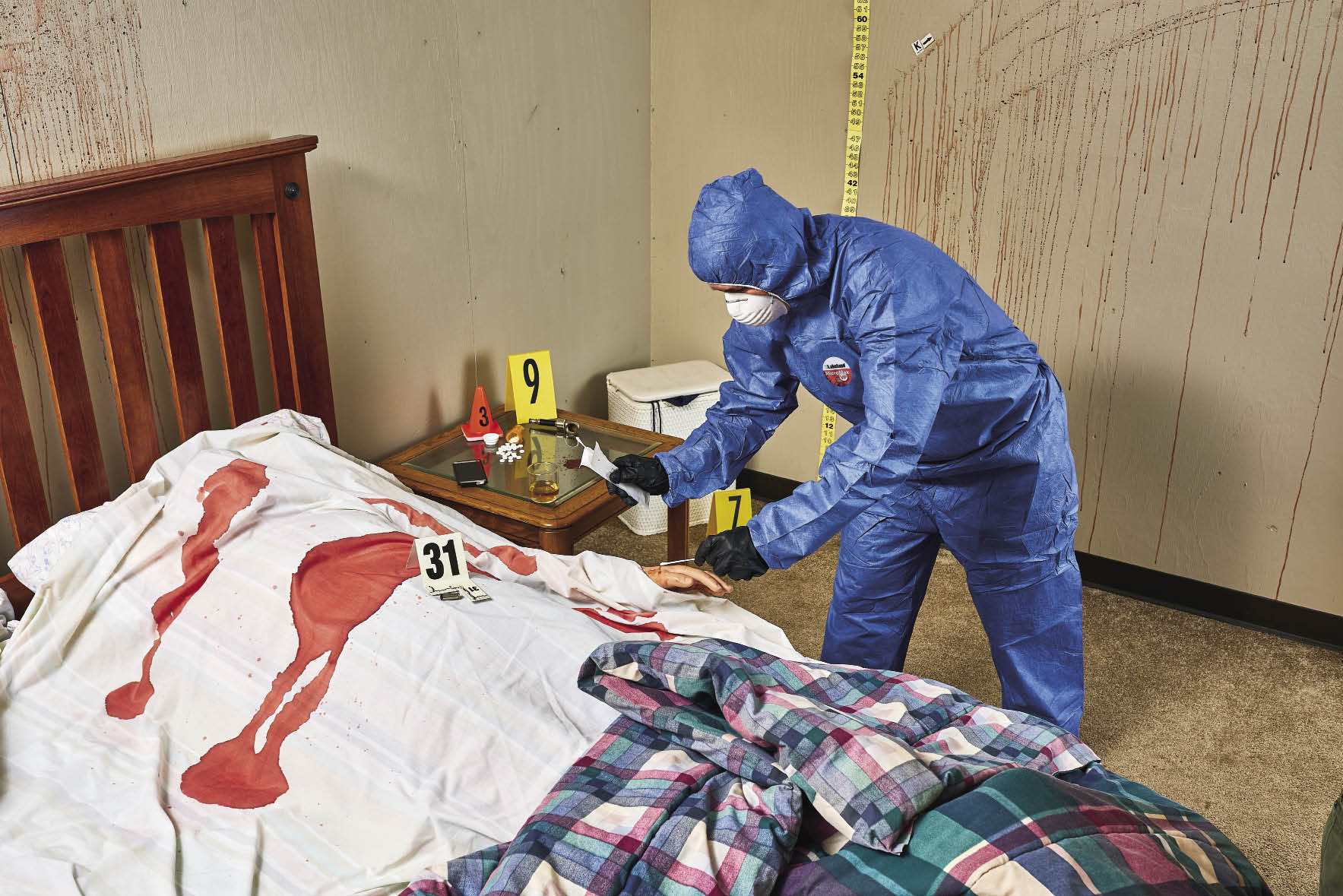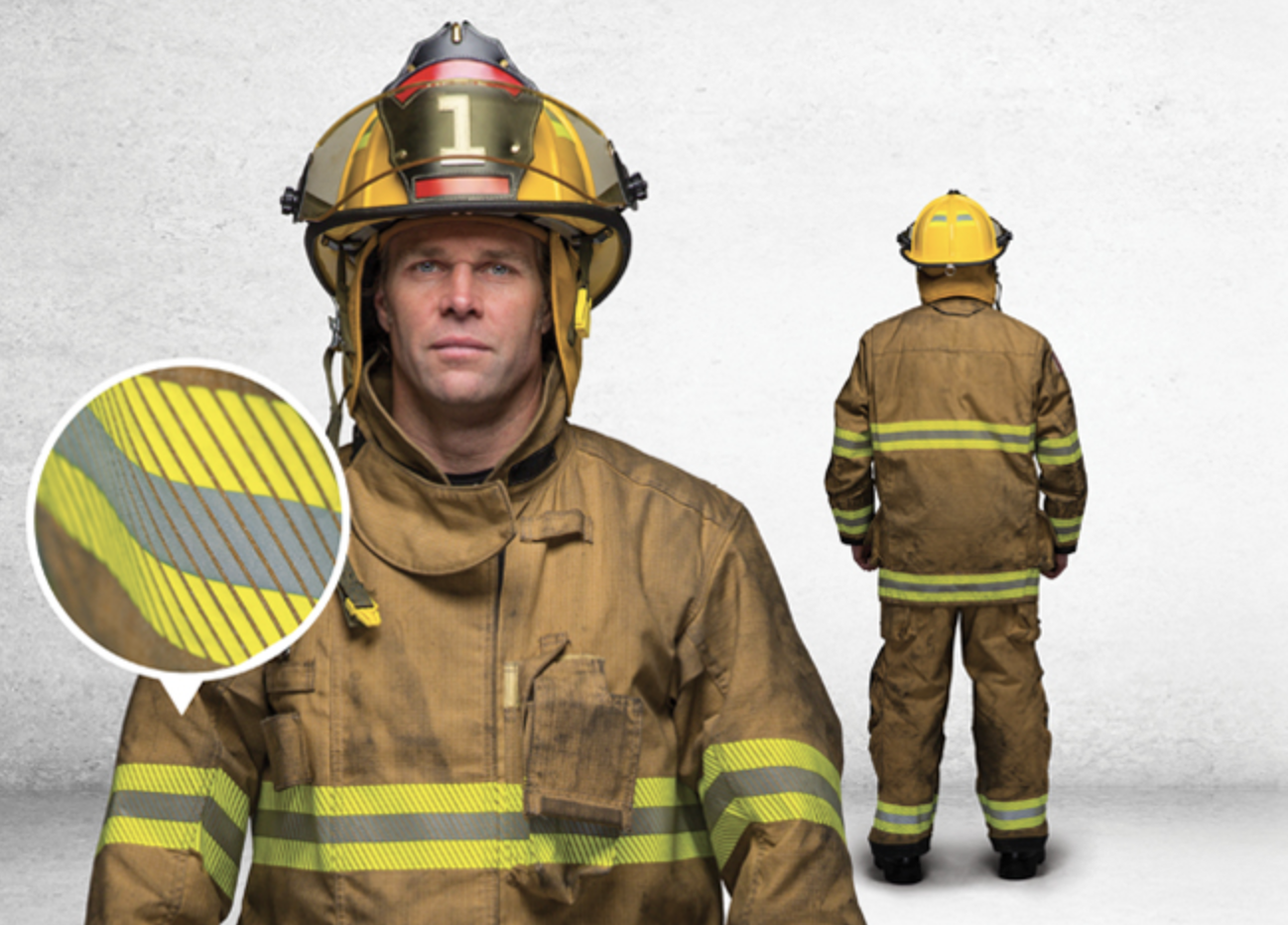
Protective apparel products continue to advance, adapt
March 6, 2020
By
OHS Canada
Technology, consumer demands spur safety gear innovation

Lakeland Industries’ MicroMax VP coverall protects users from contaminable fluids and is ideal for emergency response personnel. (Photo courtesy of Lakeland)
By Grant Cameron
The protective safety apparel industry is one that’s competitive and constantly changing. With advances in technology and new demands from consumers, companies in the space must adapt or be left behind.
It seems this year will be no exception.
A number of manufacturers are testing and introducing innovative materials in 2020 to improve on their existing safety products, while others are taking a stab at new and non-traditional markets.
Lighter, more comfortable apparel that’s both breathable and highly visible appears to be a universal theme amongst manufacturers.
Sustainability and environmental responsibility are also high on the radar.
Lightweight, gender specific
Ensuring that protective safety apparel is a good fit for women within the workforce has not been missed.
“We have focused on PPE that fully takes women’s needs into account,” says Pete Holdcroft, director of user experience design at Honeywell Safety and Productivity Solutions in Bracknell, U.K.
“This is beyond just selecting the right colours for the female worker, but customizing women’s fit and design for high-risk, technical activities. Something as small as a safety boot that is too wide can be a safety risk.”
Expectations for PPE design and comfort are rising and workers want apparel and gear that is more comfortable, he says.
With that in mind, Honeywell will soon be introducing a clothing line that is about half the weight of current products and is looking into lightweight safety footwear.
Honeywell is also working on a new safety harness which has elastic webbings for freedom of movement and visually highlights the upper part of the gear so it can be donned more quickly.
Sensors are also being embedded in some of the company’s PPE items so as to enable constant monitoring of a worker’s vital signs.

Honeywell gloves are light enough to operate smartphones and various operational panels. (Photo courtesy of Honeywell)
Hand protections
The company has also rolled out a new range of CoreShield gloves that are made from specially-engineered materials to provide enhanced protection.
The gloves have a colour-coding system on the thumb crotch that makes it simple for users to identify the correct cut-protection level. They are light enough that users can operate panels on various industrial machines and smartphones without taking them off.
Superior Glove Works in Acton, Ont., also recently announced a family of gloves for various industries featuring PinchGuard — a technology that protects fingertips from workplace crush and pinch hazards.
U.S. manufacturer Magid has introduced an ultra-lightweight impact glove for jobs that require cut-resistance. They are designed to absorb impact but are flexible enough to prevent hand fatigue.
Moisture-wicking coveralls
Lakeland Industries continues to work on new technologies, says national sales manager Randy Hillmer in Calgary.
“Historically, Lakeland’s biggest strength has always been in the disposable and limited-use market… but we are also looking at new opportunities.”
A popular product for Lakeland is the MicroMax VP coverall which is specifically designed to protect personnel when the risk of blood, body fluids, bloodborne pathogens and viral contamination are greatest. They are ideal for use by emergency response personnel at crime-scene cleanups and in crime labs.
The company has been doing a lot of woven products for industries in the U.S. — such as the Tecasafe Plus FR Coverall that provides arc-flash and flash-fire protection — and will soon be rolling out two new protective garments that have one layer that wicks away moisture and another that acts as an insulator.
“The concept of layering in this case has two purposes,” says Hillmer. “One is moisture management so we can limit heat stress. If I take two layers of protective fabric — two layers is better than one.”

3M has focused on developing reflective material. (Courtesy of 3M)
Enhanced visibility
At 3M Canada, which makes products and protection for a variety of industries, the focus has been on developing reflective material to make products like firefighter coats and turnout gear more visible.
“We often work directly with our customers to make sure our products meet their specific needs,” says Tasha DiLoreto, content marketing supervisor, personal safety division at 3M Canada in London, Ont. “3M asked firefighters what they wanted in a reflective trim for enhanced visibility on their turnout gear, and they told us what was important to them.”
As a result, 3M launched its Scotchlite Series 5600 Fire Coat Comfort Trim for fire-service PPE. The material is designed to enhance visibility in low light and nighttime conditions when illuminated by a light source.
“We work closely with all partners in industry to listen to their requirements,” says DiLoreto. “One of our ultimate goals in developing materials is to help bring workers home safely at the end of their day.”
Custom comfort
Head protection has been the focus at MSA.
The company has introduced a futuristic-looking V-Gard H1 safety helmet for workers in construction, logging and other industries. The lid features a four-point chinstrap, ratchet suspension for range of motion, a sweatband with wicking fabric, push-button accessory attachment rail and a rescue whistle integrated into the chinstrap buckle.
Customization and comfort are elements that have progressed the most in the evolution of industrial head protection, says Mackenzie Peters, product group manager for industrial head protection at MSA in Cranberry, Pa.
“The latest safety trends in design are aimed at appealing to a broader audience — think different sizes, shapes, colours and options to keep people more comfortable, and thereby help keep them safe,” he says.
“Put simply, if a helmet is more comfortable, workers are more likely to wear it, thereby ensuring compliance. And then if you give the ability for a wearer to customize it, they feel a sense of ownership and greater pride.”
MSA has seen a demand for more modern-looking helmets from millennials entering the trades.
The company has had many unusual design requests over the years, says Peters, and has produced everything from helmets for the Joshua Tree tour by U2 to helmets for the movie Jurassic World, according to Peters.
“But the designs that have had the most impact on us have been the ones we’ve done in response to a disaster or tragedy,” he says.
“From 9/11 to various hurricane recovery efforts, designing a custom hat for workers to wear while they rebuild their towns — and their spirit — is just one way we give
back.”
Grant Cameron is a freelance writer in Burlington, Ont.